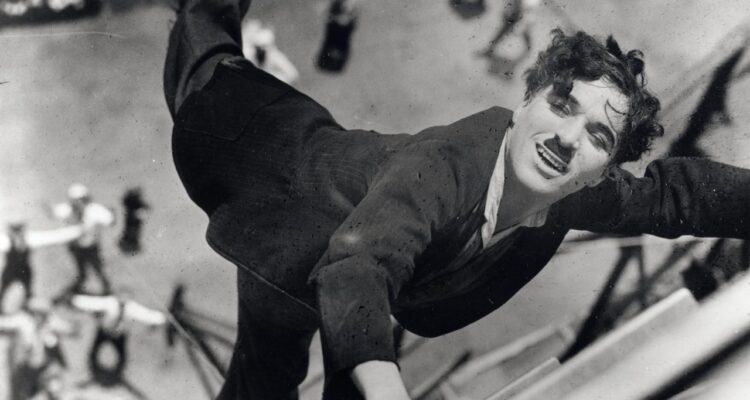Given its 20th-century association with anti-Semitism, I’ve long seen the swastika as the cross in jackboots – a symbol of cruelty, death and destruction. Yet for millennia before its appropriation by the Nazis, the swastika symbolised spirituality. In Hinduism, Buddhism and various other faiths it stood for truth and the transcendent. Now, in America and even in Australia, the swastika is once more on the march via neo-Nazism.
In much the same way, Hitler’s distinctive moustache belonged to a character that preceded him – Charlie Chaplin’s Tramp. Before Mein Kampf, Charlie was far more famous than Hitler – indeed, he was the most famous man on earth, his silent-movie clowning familiar to millions, perhaps billions. And just as he appropriated the swastika, Hitler appropriated the Tramp’s silly moustache. They became doppelgangers, something that Chaplin used to devastating effect in his 1940 masterpiece The Great Dictator, in which Tramp and tyrant get somewhat confused. Chaplin, through satire, tried to warn the world of Hitler’s menace. It’s hard to see why Hitler didn’t shave his moustache off.
The two men were born within days of each other, Charlie in London, Adolf in Austria. (So much for astrology). One would spend his life making the world laugh, the other slaughtering millions and mounting a genocidal attack on Europe’s Jews and other minorities. Haters of Chaplin – including J. Edgar Hoover – saw the great comic actor as a Jewish commie. Chaplin wasn’t Jewish, but never denied it. He was proud to be a de facto Jew: another reason to admire the genius who made The Great Dictator, The Gold Rush, Modern Times, City Lights and The Kid. Chaplin’s flaws gave his enemies ammunition that Hoover could use to run him out of town.
Read the article by Phillip Adams in The Australian.

